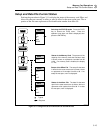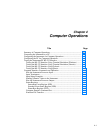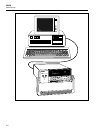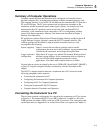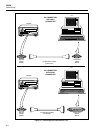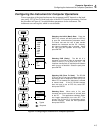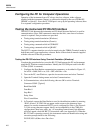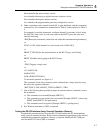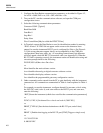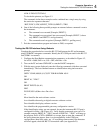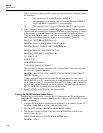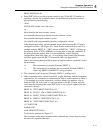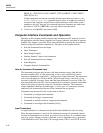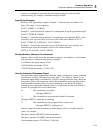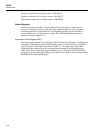
Computer Operations
Testing the Instrument/PC RS-232 Interface
4
4-7
Mn.n identifies the main software version.
An.n identifies the analog-to-digital converter software version.
Dn.n identifies the display software version.
Ln.n identifies the programmable gate-array configuration version.
6. Other commands can be entered from the PC to gain familiarity with the instrument
command set. All commands are summarized in Table 4-4 and explained in Table 4-
5.
For example: to reset the instrument, configure channel 0 to measure volts dc using
the 300V DC scale (scale 4), send scan results to the RS-232 port, and scan once,
enter the following:
*RST[Resets the instrument (which does not affect the communication parameters)]
=>
FUNC 0, VDC, 4[Set channel 0 to volts dc and scale 4 (300V DC)]
=>
PRINT_TYPE 0,0[Sets the data destination as the RS-232 port, and all data]
=>
PRINT 1[Enables data logging to the RS-232 port]
=>
*TRG [Triggers a single scan]
=>
15:17:0407/21/94
0:000.00 VDC
ALM:15DIO:255TOTAL:0
To decode the printout, see Figure 5-3.
The commands in the above example can be combined into a single entry by using
the semicolon separator character:
*RST;FUNC 0,VDC,4;PRINT_TYPE 0,0;PRINT 1;*TRG.
7. One of the following three possible prompts are returned when a command is sent to
the instrument:
=> The command was executed[Example, PRINT 1].
!> The command was recognized, but not executed [Example, PRINT 3, where only
PRINT 0 and PRINT 1 are legal entries].
?> The command wasn’t recognized [Example, PRITN 1, spelling error].
8. Exit Windows and return to DOS, as required.
Testing the RS-232 Interface Using Terminal Emulation (Generic)
Complete the procedure below to test the RS-232 link between the PC and instrument
using a generic terminal emulator. Refer to the documentation appropriate to the selected
communications/terminal emulation software, as required. Identify the PC COM port
used for the RS-232 link (COM1 is assumed).



